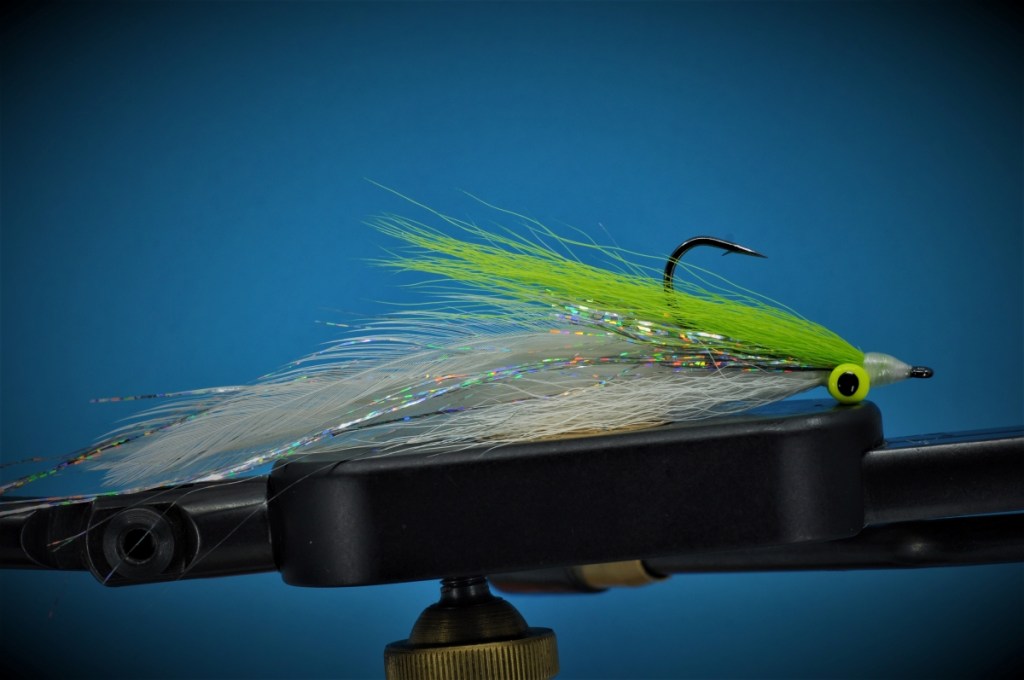
Looking for something else?
Try one of these!
Clouser’s Half & Half Step-by-Step:
Bob Clouser’s Deep Minnow and Lefty Kreh’s Deceiver have long proven two of the most effective streamer patterns on the planet. Each has accounted for countless species across the globe and both have developed loyal followings as a result. It should come as no surprise then that Bob Clouser’s eventual combination of the two is held in similar high regard.
Dubbed the Half & Half, Clouser’s hybrid was developed with the intent of targeting the large bass that inhabited his home waters. Capable of preying on fall fish up to 12” in length, these larger fish were simply not interested in the 3-4” long, thin profile of the original Deep Minnow in certain instances. In contrast, the Half & Half, with its long hackle tail and broader baitfish profile, served to mimic the larger prey these fish sought while still maintaining the classic Deep Minnow’s jig-like action.
Tied on a #1 below, this pattern can be tied as large as 6/0 and has long proven a productive pattern for large predators across the globe.
| Materials: | ||
|---|---|---|
 Gamakatsu B10S (#2-6/0) Gamakatsu B10S (#2-6/0) |  140 Denier (White) 140 Denier (White) |  Lead Eyes (Med. or Lg.) Lead Eyes (Med. or Lg.) |
 Streamer Hackle (White) Streamer Hackle (White) |  Flashabou (Silver) Flashabou (Silver) |  Bucktail (Chartreuse over White) Bucktail (Chartreuse over White) |
 UV Resin UV Resin |
Disclosure: This post contains affiliate links. A small commission may be paid for purchases made through these links.
Clouser’s Half & Half Step-by-Step Tying Instructions:
(Mobile Viewers: Click images to enlarge)
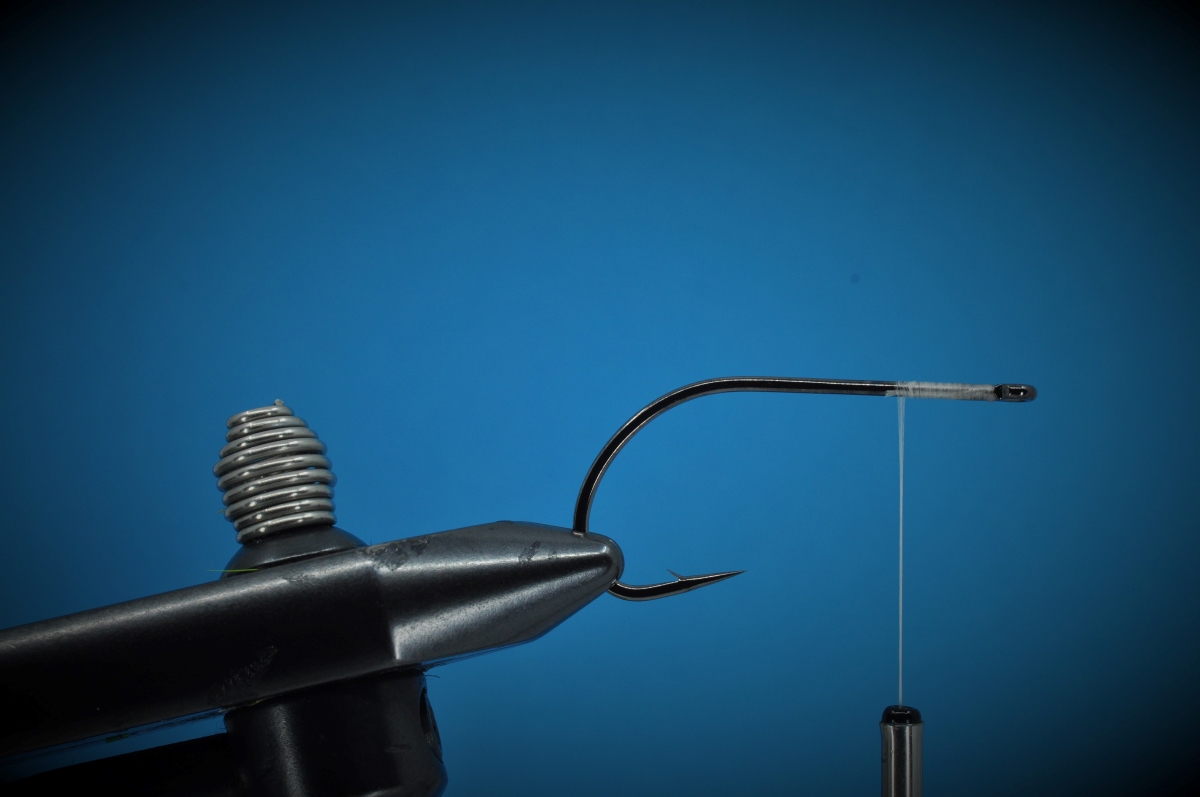
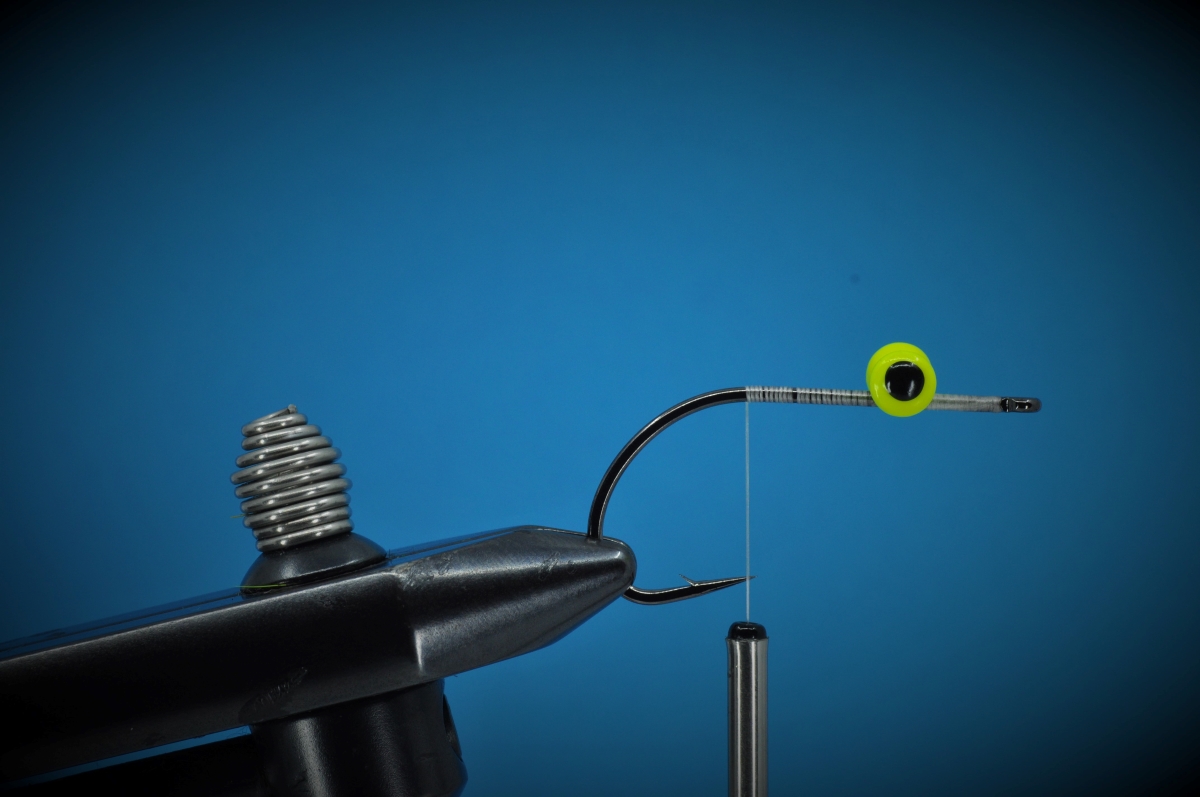
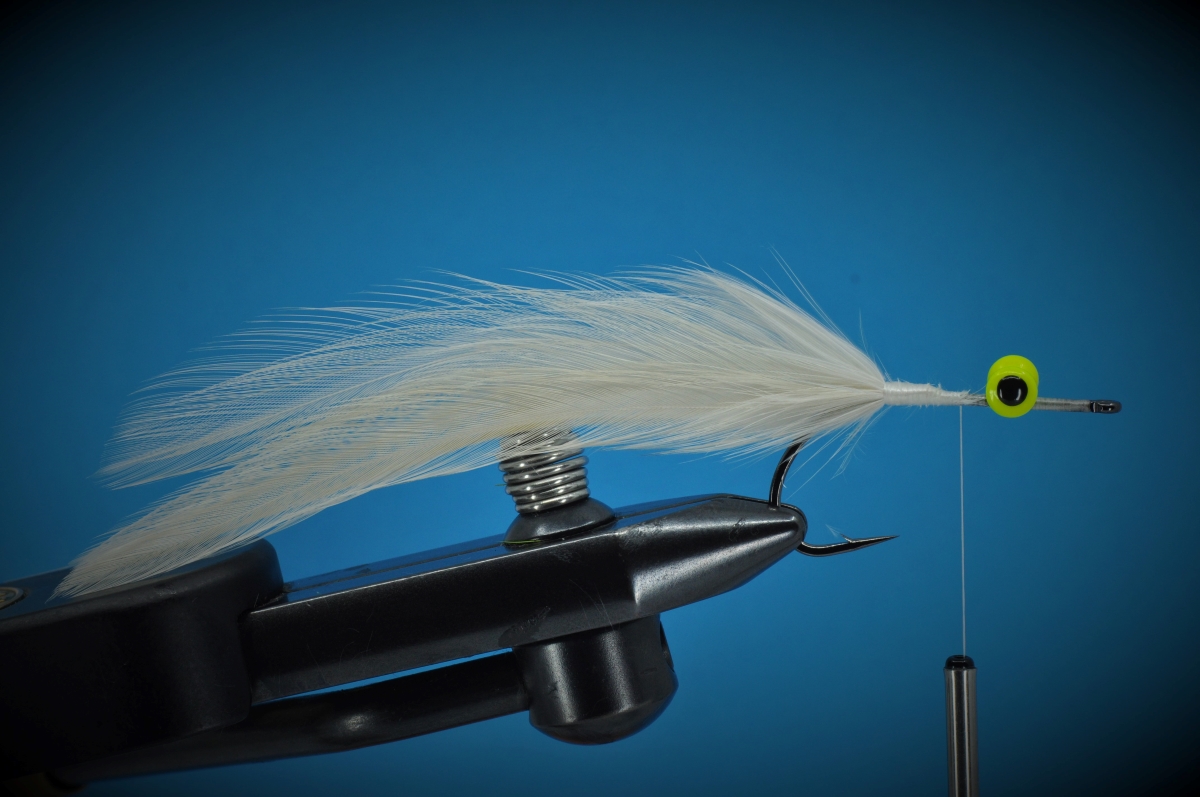
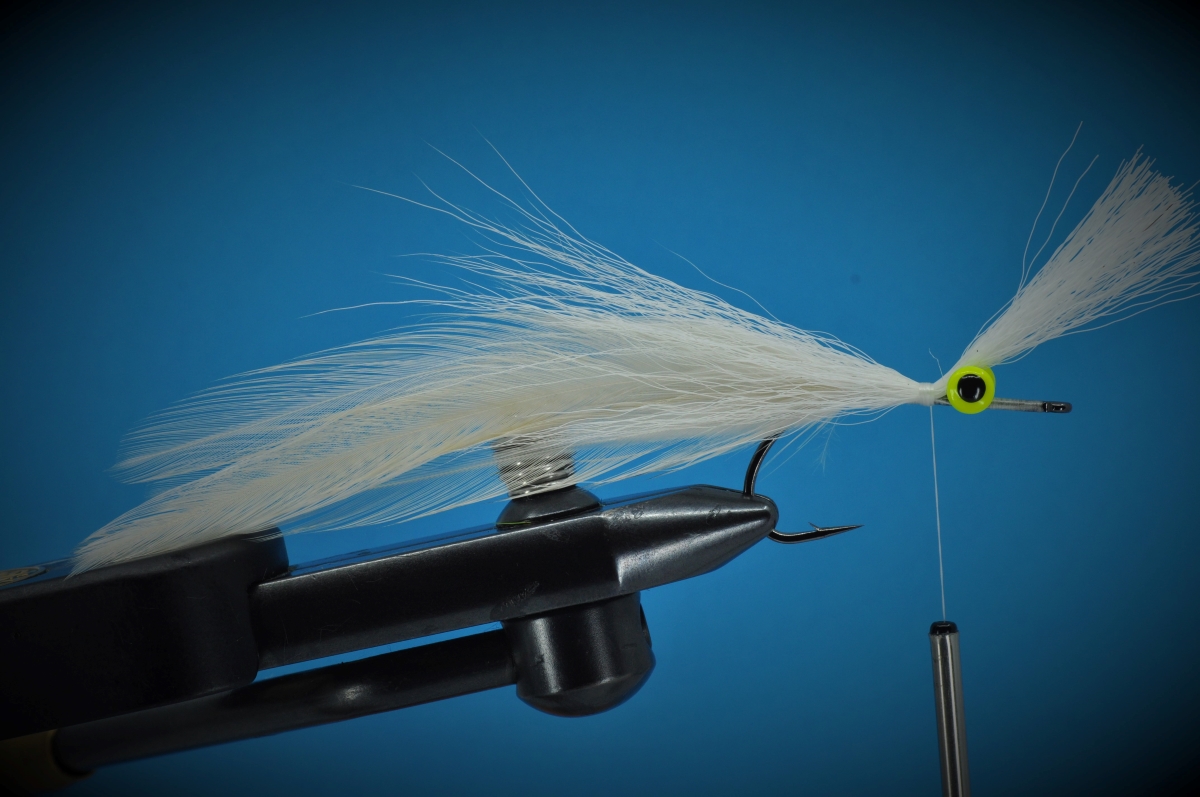

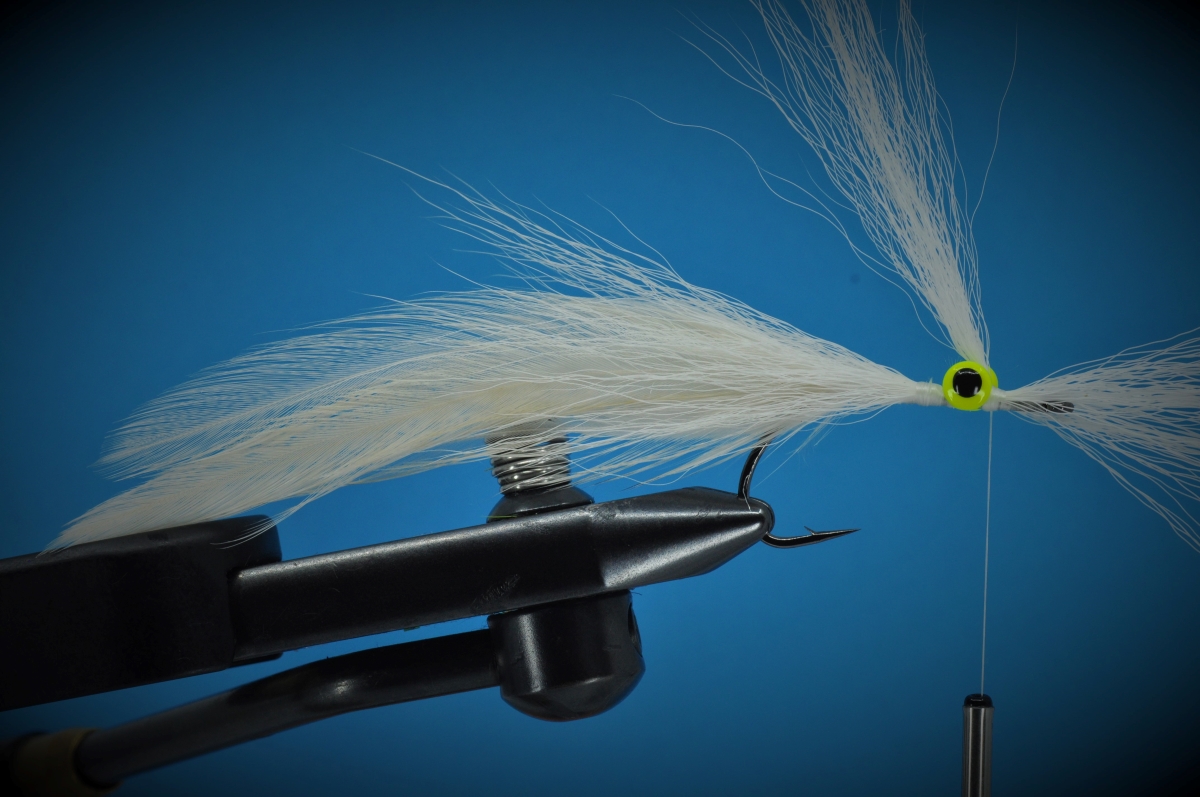
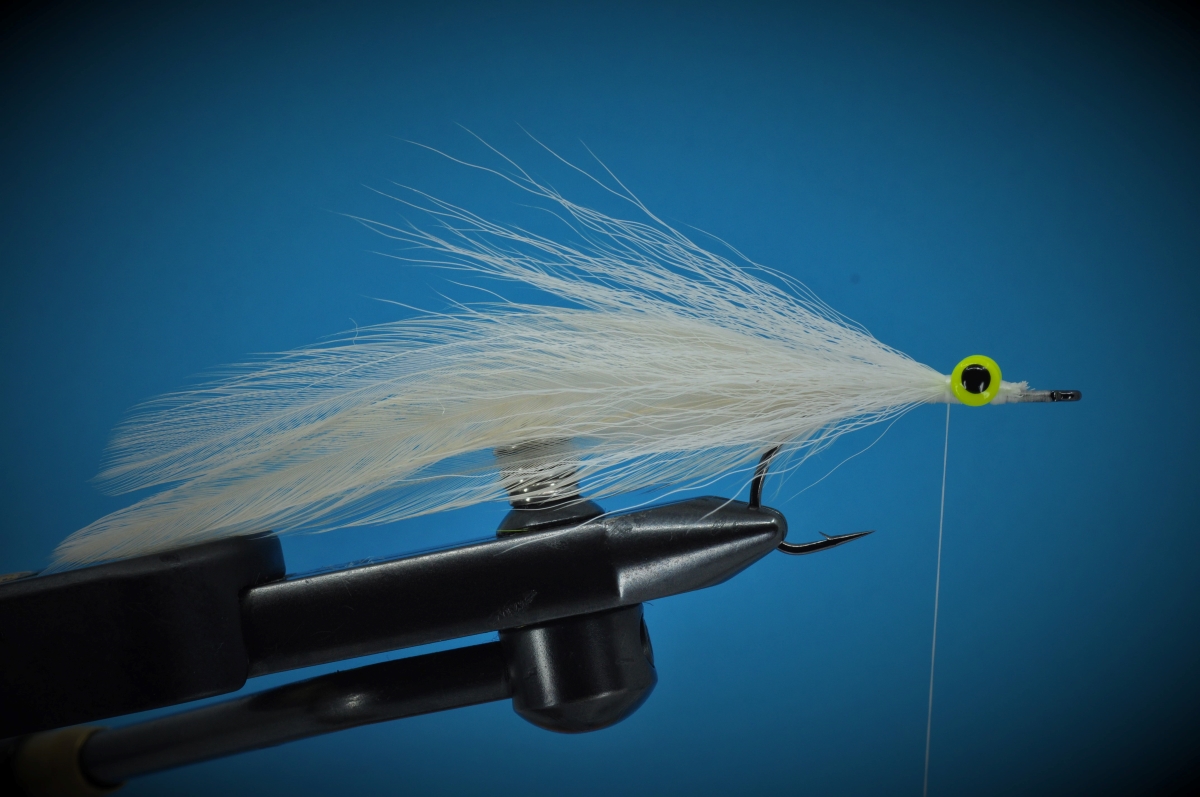
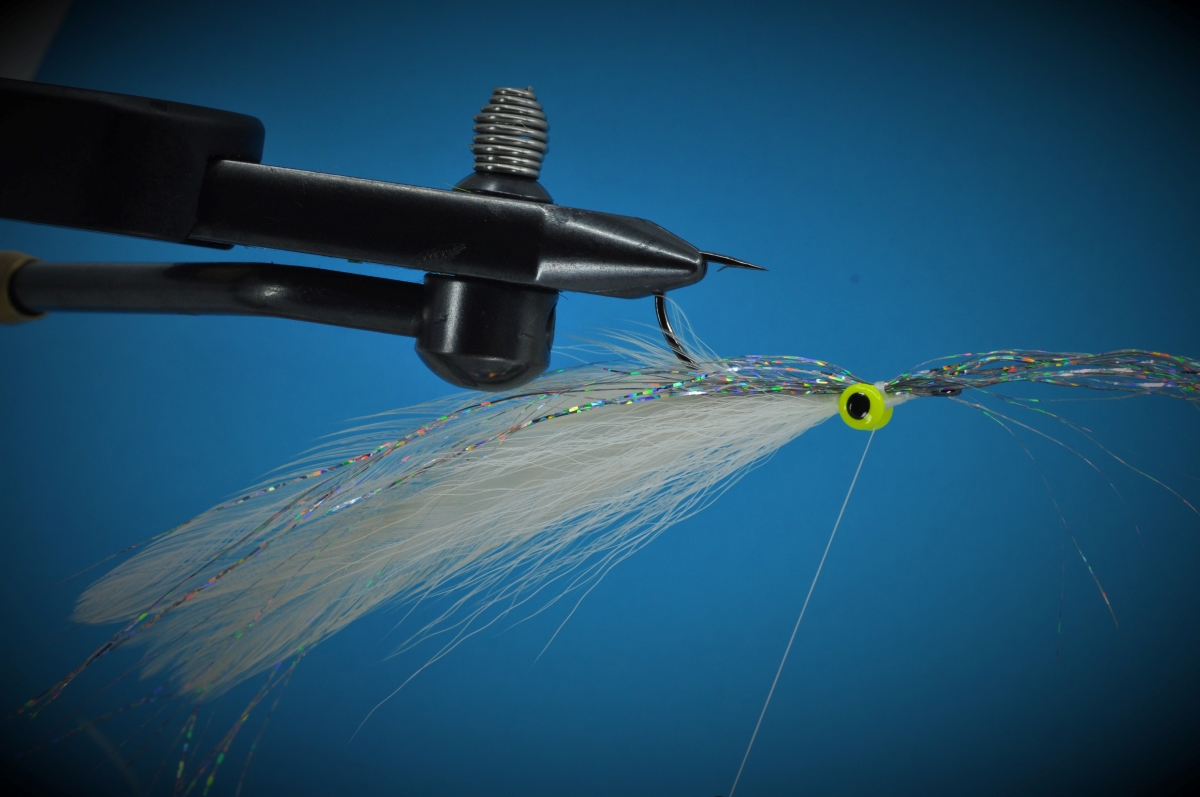

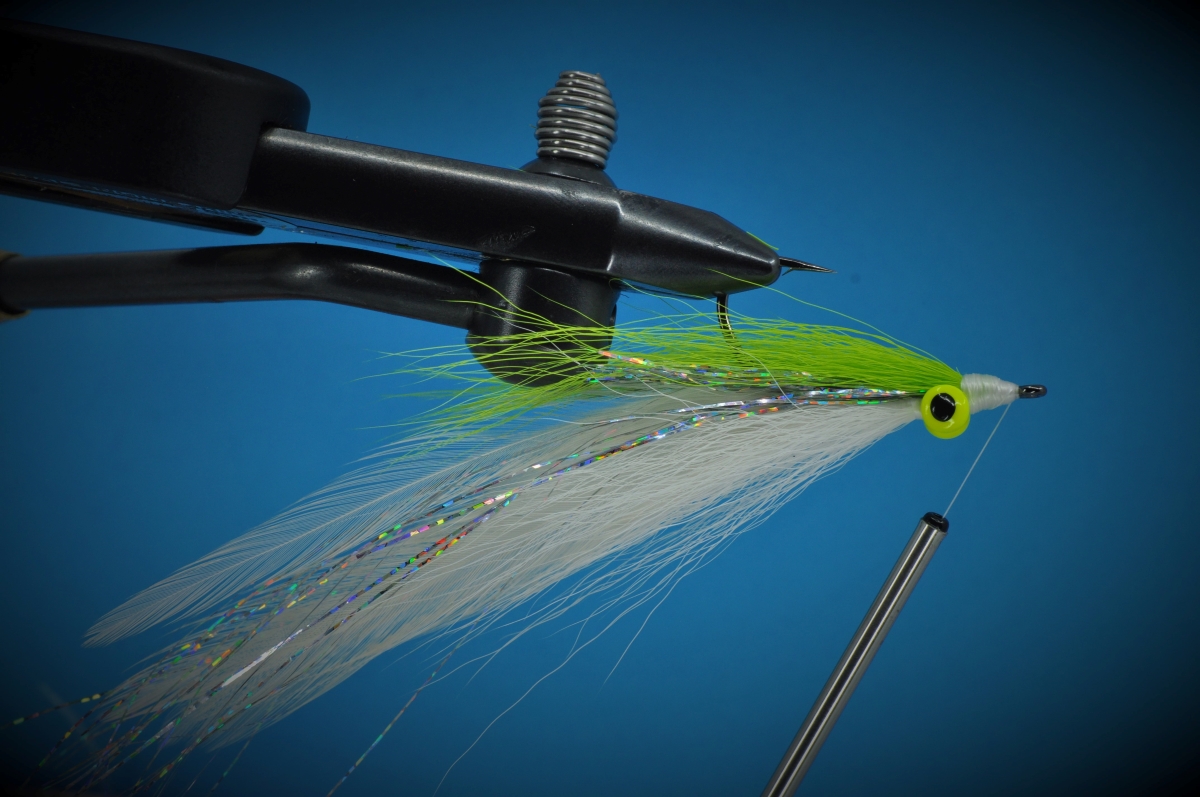
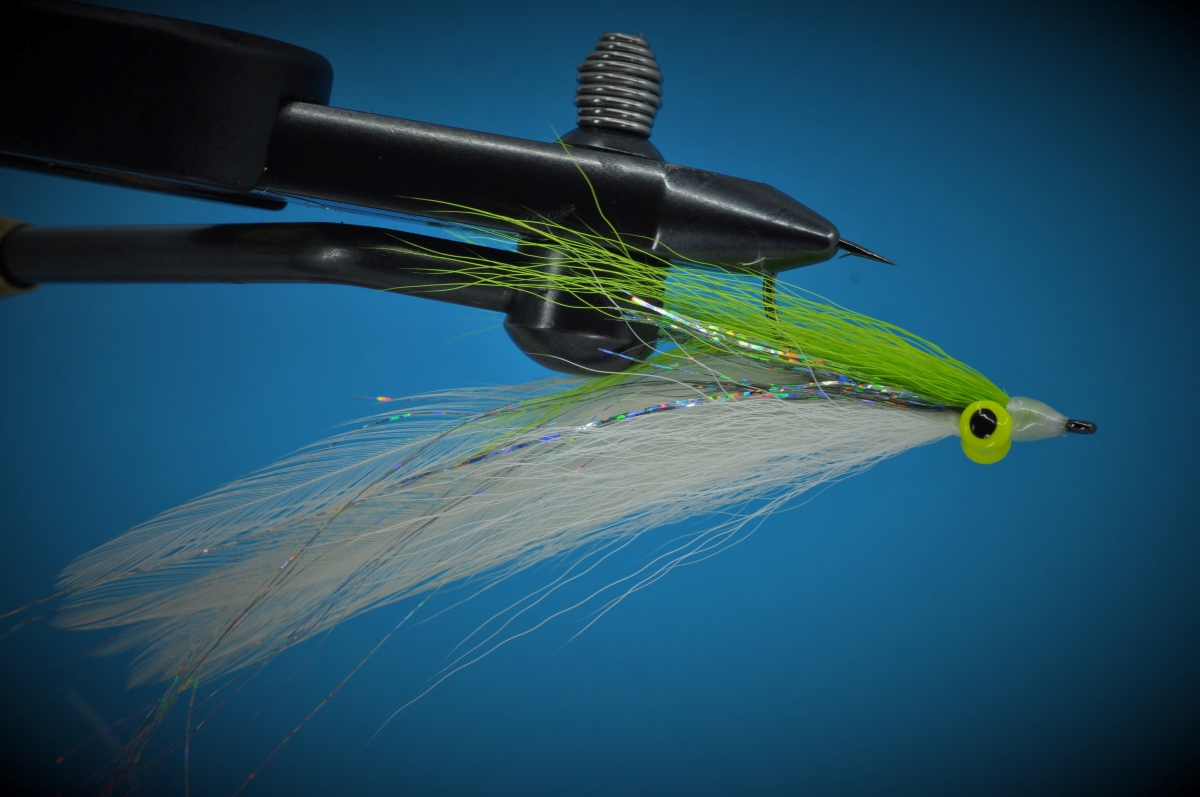
Tips and Tricks
- Weight and Depth – In the material list above, I listed Medium or Large dumbell eyes dependent on the size of your pattern. Be sure to experiment with multiple sizes as you begin tying this fly. You may find you prefer heavier or lighter eyes dependent on depth and the type of jigging action you are looking to impart.
- Color – While this is a great “Match the Hatch” streamer pattern, it is hard to beat the basics. Chartreuse over White, Olive over White, Chartreuse, Red over White, Black over Red and Black all have a place in your streamer box.
- Avoiding Tail Tangles – Longer streamer hackle tails are notorious for tangling around the hook after too many casts. To avoid this consider tying in a sparse clump of bucktail off the bend of the hook before tying in your hackle. As an alternative, consider a mono loop. In both cases, be sure the material extends at least a hook gap beyond the bend. This should prevent the vast majority of tangles.
Proof of Concept
While I’m currently stocking my streamer box with a number of color variations between size 2 and 4/0, it may be a while before these are proven out. Given they would no doubt work on the local bass, but my intent is to save them for the Tiger Musky I will once again target as part of The Mayfly Project’s 25 on the Fly tournament this coming May.
Until then, stay tuned. Or, better yet, chime in below and let me know what you’ve managed to catch on this pattern.
Tight Line!
Chris

Species Caught on Clouser’s Half & Half to Date:
Enjoy our Content?
Subscribe below to be notified anytime a new Step-by-Step is added.
Support our Content
Enjoy our content & want to help support our work? Consider clicking one of the Ads below the article if something catches your attention. Each click brings in a small bit of revenue to help offset the cost of maintaining & hosting this great site!

Chris,
I am also stocking my streamer box currently and will tie some of these to test on the Columbia River smallmouth. Will try imitating salmon smolt and shad fry. The latter is a huge run on the Columbia (planted from Atlantic shad) and by late summer/early fall there are millions of fry in the system. By the way, your site will no allow a “like”. Says “Loading…”.
Thanks for the heads up, Steve. The “like” button issue happened once previously, but eventually resolved itself. Guessing I have an incompatible plugin running somewhere on the site. I’ll have to dig into this a bit later and see if I can finally resolve it once and for all.
As for the shad run, that sounds like quite an event. I’d imagine the Columbia River must produce some sizeable smallmouth with that density of forage available.
And my dad (John) says hello by the way. He was surprised to hear I had stumbled across your blog.
Chris